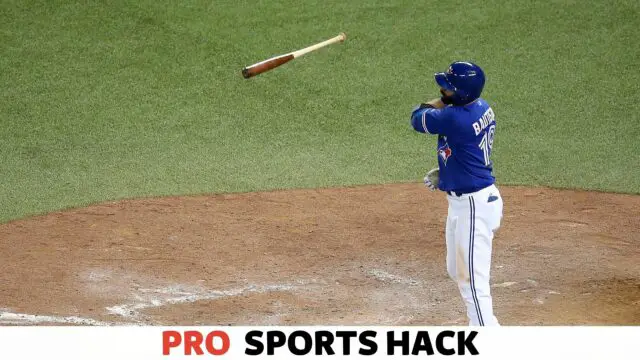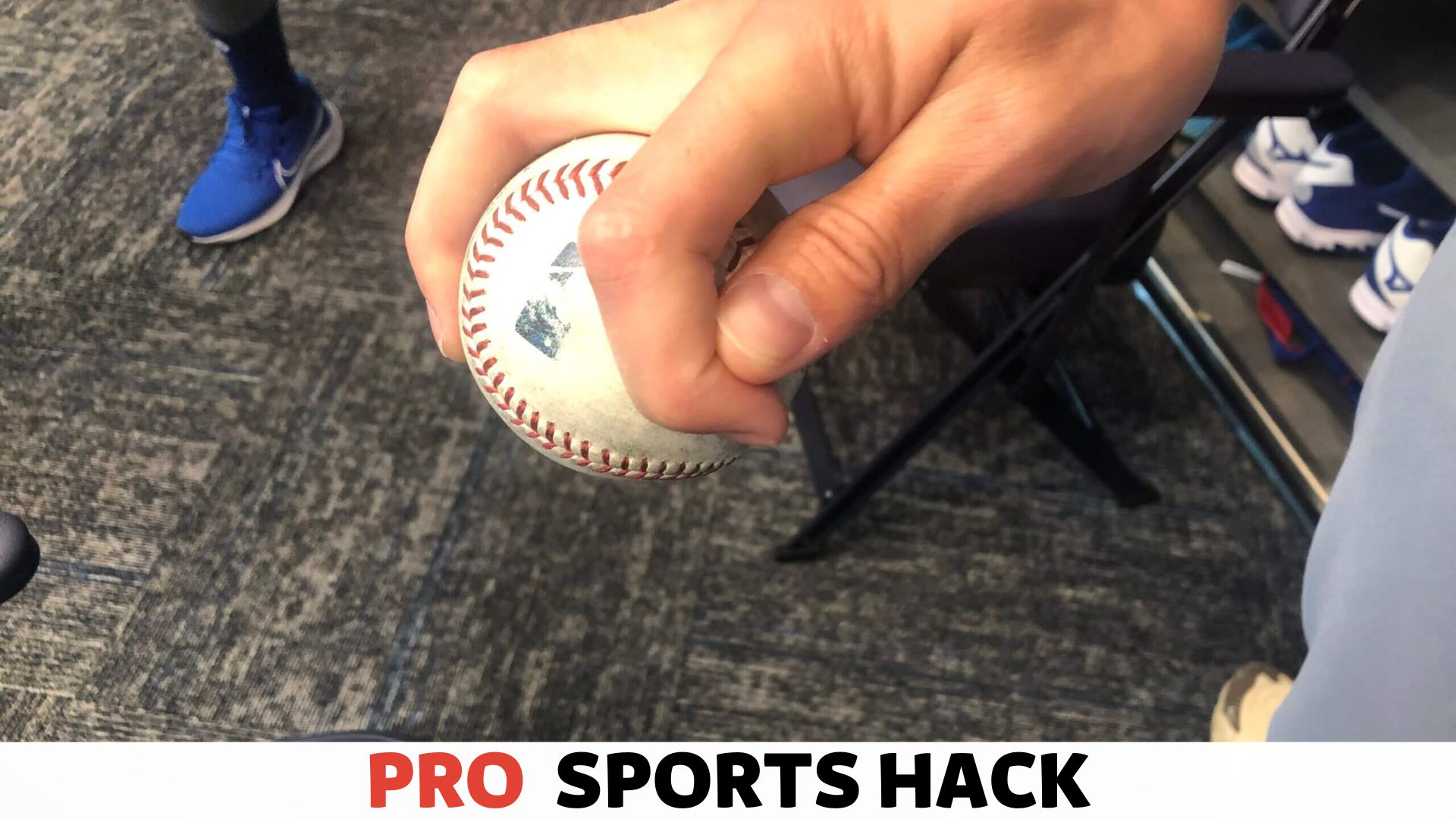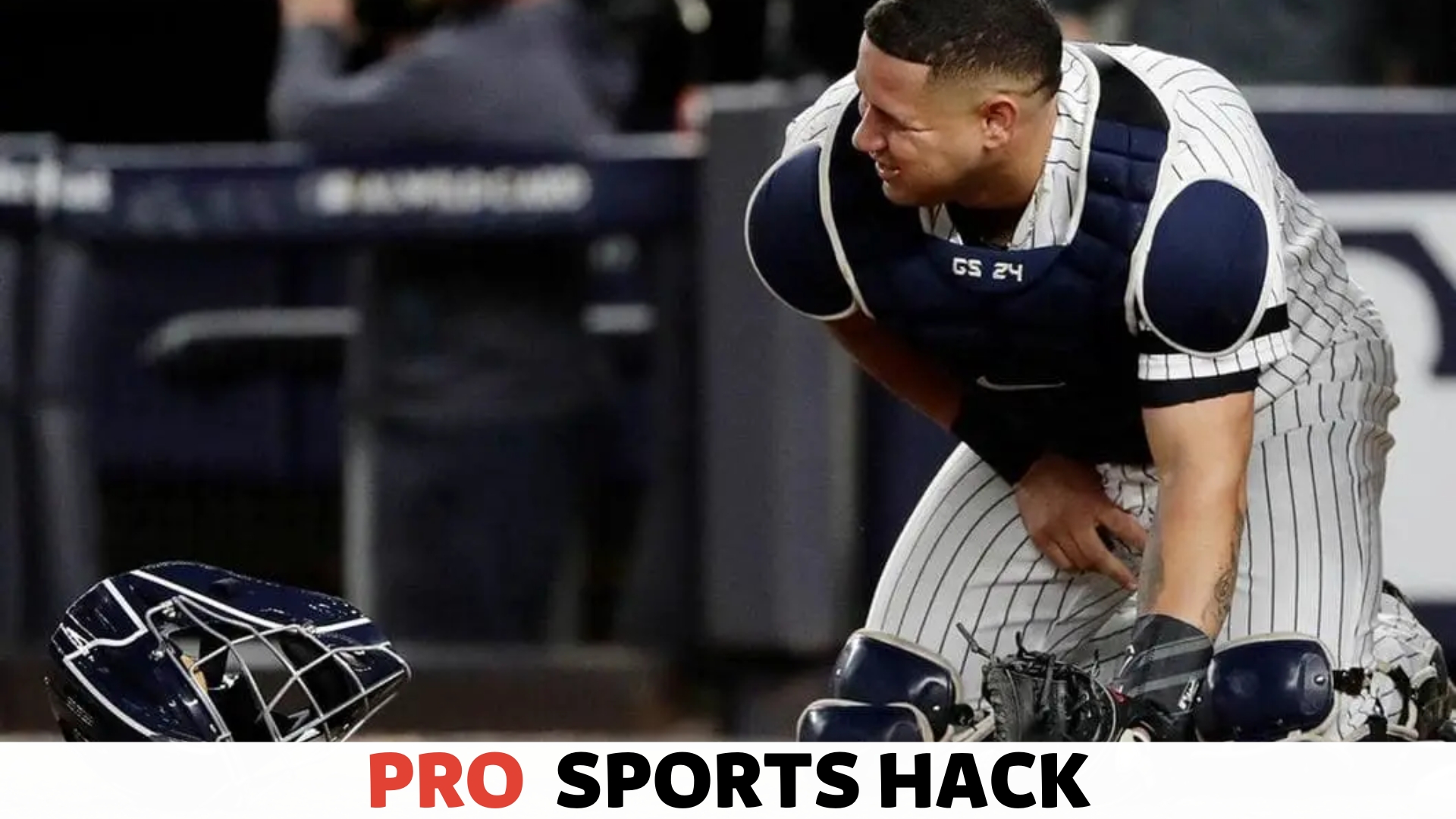
A bat flip in baseball is a celebratory gesture where a batter flips their bat after hitting the ball. A bat flip in baseball is a popular celebratory gesture when a batter flips their bat into the air after successfully hitting the ball.
It has become a way for players to show off their accomplishments and add style to the game.
The bat flip has gained significant attention and discussion in recent years, with some embracing it as a form of self-expression. In contrast, others consider it disrespectful to the opposing team.
This action often happens when a batter hits a home run, a crucial hit, or wants to display confidence and excitement.
While bat flips can add flair to the game, they can also spark controversy and heated debates among players, coaches, and fans.
Understanding the Bat Flip
When it comes to baseball, one of the most controversial and thrilling gestures you’ll ever witness is the bat flip. Originating from the sport’s rich history, the bat flip has become synonymous with players’ expressions of triumph and exuberance.
In this article, we’ll delve into the origins of the bat flip, define what it entails in baseball, and explore the surrounding controversy.
Origins of the Bat Flip
The bat flip, as we know it today, can be traced back to the vibrant streets of the Dominican Republic during the 1950s. The Dominican baseball players brought their unique flair, introducing captivating displays of emotion and passion.
The bat flip became integral to their playing style, allowing them to celebrate their successes and display their confidence.
As time passed, the bat flip gained recognition across various leagues, including Major League Baseball (MLB).
With the rise of social media and globalization, the bat flip transcended borders, captivating fans worldwide and further solidifying its place in the baseball lexicon.
Definition of Bat Flipping in Baseball
So, what exactly is a bat flip? Picture this: a player hits a massive home run, sending the ball soaring over the outfield wall.
Filled with excitement and adrenaline, the player flips their bat with a deft flick of the wrist in a magnificent display of style. It’s a moment of triumph, celebrating their skill and accomplishment.
However, the bat flip is not limited to home runs. It can also be seen when a player hits a crucial run-scoring base hit, a walk-off hit to end the game, or even a long foul ball that showcases their raw power at the plate.
It’s an expression of confidence and swagger, an act that electrifies the game and stirs the emotions of players and fans alike.
The Controversy Surrounding Bat Flipping
Like any form of self-expression, the bat flip has its fair share of controversy. Traditionalists argue that it disrespects the game and opposes the unwritten rules of baseball, emphasizing humility and sportsmanship.
They view bat flipping as excessive showboating, an unnecessary flaunting of one’s achievements.
On the other hand, proponents of the bat flip argue that it injects excitement and entertainment into the sport. They believe it adds an element of personality and flair to the game, allowing players to display their individuality and passion.
They assert that the bat flip is a celebration, an expression of joy that enhances the spectacle of baseball.
Despite the debate surrounding bat flipping, one cannot deny its undeniable allure.
The bat flip captures the essence of human emotion and competition, showcasing the raw energy that pulses through the veins of every player on the field.
It embodies the sheer joy and triumph that comes with conquering the challenges of baseball.
The Mechanics of a Bat Flip
A bat flip in baseball is a striking gesture where a player tosses their bat after hitting the ball. It’s used to celebrate a successful hit or show confidence.
The mechanics involve a quick wrist flick to propel the bat in the air, adding flair to the player’s performance.
Bat flips have become an iconic part of baseball in recent years, adding a touch of flair and excitement to the game.
A bat flip occurs when a batter hits a powerful home run or makes a significant impact with a swing, and instead of dropping the bat, the batter flips it into the air with a stylish flourish.
Not only does it show off the batter’s confidence and swagger, but it also serves as a way to celebrate their success. Let’s explore the mechanics of a bat flip.
The Proper Technique for a Successful Bat Flip
To execute a successful bat flip, players must follow a specific technique that ensures the bat flips gracefully through the air. Here are some key elements to consider when attempting a bat flip:
1. Grip and Release
The grip on the bat plays a vital role in a smooth and controlled bat flip. Batters should hold the bat firmly but not too tightly.
As the ball is hit, the batter’s grip should loosen, allowing the swing’s natural momentum to carry the bat forward. The release of the bat should be timed perfectly, allowing it to flip while maintaining control throughout the motion.
2. Follow-Through
A proper follow-through is crucial for a successful bat flip. After making contact with the ball, the batter must continue the swing motion upwards and towards the opposite side of the field.
This follow-through provides the necessary momentum for the bat to flip and ensures a smooth, stylish motion.
3. Balance and Body Language
Maintaining balance throughout the swing is essential. Batters should distribute their weight evenly and stay centered. Additionally, body language plays a significant role in the aesthetics of a bat flip.
A confident and relaxed posture, combined with a controlled motion, enhances the overall effect of the flip.
Factors That Determine the Trajectory and Style of a Bat Flip
Several factors influence the trajectory and style of a bat flip. These factors can vary from player to player and situation to situation.
Understanding and mastering these factors can help batters achieve the desired effect with their bat flips. Here are some key factors to consider:
1. Bat Speed and Distance
The speed at which the ball leaves the bat and the distance it travels can greatly impact the bat flip. A powerful swing that sends the ball soaring into the stands allows for a more extended and higher flip, showcasing the batter’s strength and confidence.
2. Timing and Momentum
The timing of the bat flip is crucial. Batters must wait until they’ve made clean contact with the ball and their swing’s momentum is at its peak before releasing the bat. This timing ensures a fluid and impactful flip.
3. Player’s Personal Style
Each player has their own unique style and personality, which often translates into their bat flips. Some players prefer dramatic, high flips, while others opt for subtle, understated gestures. The player’s style influences their bat flip’s trajectory, height, rotation, and overall appearance.
Notable Bat Flips in Baseball History
Over the years, several memorable bat flips in baseball history have left fans in awe. Here are a few notable examples:
- Jose Bautista’s Bat Flip in the 2015 ALDS: After hitting a crucial three-run homer in the deciding game of the American League Division Series, Bautista unleashed an emphatic bat flip, capturing the intensity and excitement of the moment.
- Yasiel Puig’s Bat Flip in the 2013 NLCS: When Puig hit a huge triple in Game 3 of the National League Championship Series, he punctuated the play with a powerful bat flip that perfectly reflected his energy and passion for the game.
- Javier Baez’s Bat Flip in the 2016 World Series: During Game 7 of the World Series, Baez hit a pivotal home run and celebrated with an exuberant bat flip that symbolized the Cubs’ historic victory after a 108-year championship drought.
Bat flips have become more than just an act of celebration; they have become a form of artistic expression.
With proper technique, understanding the factors at play, and a dash of personal style, bat flips can add an electrifying element to the game that fans can’t resist.
The Cultural Impact of Bat Flipping
The bat flip is one of the most debated and discussed aspects of baseball in recent years. Flipping the bat after a successful hit has sparked cultural conversations surrounding sportsmanship, self-expression, and tradition.
Bat flipping has become more than just a physical action on the baseball field; it has woven its way into the fabric of the game’s culture, eliciting strong emotions and opinions from players, coaches, and fans alike.
The Role of Bat Flips in the Celebration of Successful Hits
Bat flips are an exuberant celebration for players who have connected with a pitch, driving home the idea that enthusiasm and passion are integral parts of the game.
The act of flipping the bat is a demonstration of the player’s emotions and serves to amplify the excitement for both the team and the fans.
This celebratory gesture adds a new dynamic to the game, breathing life and energy into the traditional structures of baseball.
The Psychology Behind Bat Flipping and Its Effect on the Game
The psychology behind bat flipping is rooted in the player’s expression of confidence and assertion of dominance. Players assert mastery and control over the situation by flipping the bat, potentially impacting the opposition’s morale.
This act also serves as a form of self-motivation, igniting the player’s sense of accomplishment and success, further fueling their performance on the field.
The Evolution of Acceptance Towards Bat Flipping in Baseball Culture
Bat flipping has experienced a gradual evolution in acceptance within baseball culture. While traditionally frowned upon as a breach of sportsmanship, the modern game has shifted towards embracing expressions of individuality and emotion on the field.
As more players engage in bat flipping, it has become a symbol of confidence, skill and an exciting cultural phenomenon within the baseball community.
Bat Flips: Respect vs. Disrespect
A bat flip is a celebratory gesture in baseball, where a player flips the bat after hitting a home run. While some see it as a sign of disrespect, others view it as a display of confidence and passion in the game.
Examination of Different Perspectives on Bat Flipping
Bat flipping in baseball has long been a topic of debate, with a wide range of opinions on whether it is disrespectful or simply a celebration of a player’s achievement.
The views differ significantly depending on cultural background, personal values, and prior experiences with the game.
For some, bat flipping represents a lack of respect for the opposing team and is seen as showboating or even taunting. They argue that the act demonstrates a lack of sportsmanship and undermines the integrity of the game.
Additionally, opponents may interpret it as an attempt to belittle or humiliate their efforts.
These individuals advocate for a more traditional approach to the game, where players adhere to unwritten rules and maintain a sense of humility.
On the other hand, some view bat flipping as an exhilarating display of emotion and passion. They see it as a way for players to express themselves and bring excitement to the game.
Supporters argue that baseball is not only about the technical aspects but also the entertainment value.
In their eyes, bat flipping adds a much-needed element of flair and intensity, capturing the attention of fans and creating memorable moments in the sport.
How Bat Flipping Adds Excitement to the Game
When a player executes a well-timed bat flip, it ignites an electrifying atmosphere in the stadium. The dramatic gesture and the release of the bat soaring through the air serve as a visual representation of the player’s triumph.
It intensifies the competitive spirit on the field and builds anticipation among the spectators.
The crowd, eager to witness such daring displays, becomes more engaged in the game, amplifying the overall experience.
Moreover, bat flipping can have a psychological impact on both teams. For the team performing the flip, it boosts their morale and injects a sense of confidence, propelling them to give their all in the game.
Conversely, it may serve as a wake-up call for the opposing team, fueling their determination to retaliate and reminding them of the stakes involved.
In this way, bat flipping contributes to the competitive nature of the sport, motivating players and intensifying the action on the field.
Instances of Controversy and Backlash Related to Bat Flipping
While bat flipping is undoubtedly a thrilling aspect of baseball, it is not without its share of controversy. Throughout the years, numerous instances have sparked heated discussions and reactions from players, coaches, and fans alike.
Some controversial bat flips have led to on-field altercations, team tensions, and suspensions.
| Date | Player | Team | Opposing Team |
|---|---|---|---|
| April 21, 2015 | Jose Bautista | Toronto Blue Jays | Texas Rangers |
| May 1, 2019 | Tim Anderson | Chicago White Sox | Kansas City Royals |
| June 11, 2020 | Fernando Tatis Jr. | San Diego Padres | Texas Rangers |
These instances, among others, have ignited debates over the appropriateness of bat flipping and highlighted the sport’s cultural and generational differences.
It is essential to consider the varying perspectives and understand that what one person perceives as disrespectful, another may view as an expression of joy and enthusiasm.
The Future of Bat Flipping in Baseball
Bat flipping has become an increasingly popular and exciting trend in modern baseball. The moment a hitter launches a home run and flips their bat in celebration has become a symbol of individual expression and confidence in the game.
This practice, once considered disrespectful and unsportsmanlike, has now found a place in the hearts of fans and players alike.
As the acceptance and integration of bat flipping continue to grow, questions about the future of this unique game aspect continue to be raised.
The Growing Acceptance and Integration of Bat Flipping in Modern Baseball
Over the years, the act of bat flipping has transcended cultural boundaries and garnered support from players and fans worldwide.
What was once considered a rebellious gesture is now widely recognized as a genuine display of emotion and passion.
Many young players look up to their favorite sluggers and seek to emulate their bat-flipping style to self-express.
- Players like Juan Soto, Jose Bautista, and Yasiel Puig have become synonymous with bat flipping, creating memorable moments that fans cherish.
- Not only is bat flipping a source of entertainment, but it also adds an extra layer of excitement to the game, fueling rivalries and creating a buzz among spectators.
- In the era of social media, bat flips often go viral, generating widespread attention for the sport and attracting new fans.
Strategies for Balancing Sportsmanship and Individual Expression in Bat Flipping
As bat flipping continues gaining acceptance, efforts are being made to balance individual expression and traditional sportsmanship.
It is essential to preserve the integrity of the game while allowing players to express themselves freely.
Here are some strategies that can be employed:
- Teaching respect: Young players should be educated on respecting the game, opponents, and umpires. They should understand that bat flipping should not be used to demean or provoke opponents but rather as a celebration of personal achievements.
- Encouraging creativity: Players should be free to develop their unique bat-flipping style as long as it does not violate the spirit of the game or cause unnecessary conflict.
- Umpire discretion: Umpires can play a role in determining if a bat flip crosses the line and becomes disrespectful. Clear guidelines can be established to ensure consistency and avoid controversies.
The Significance of Bat Flipping in Shaping the Future of Baseball
Bat flipping represents a shift in baseball culture, emphasizing the importance of individualism, self-expression, and entertainment. As the sport evolves, it must adapt to the changing preferences of fans and players alike.
Integrating bat flipping into the game ensures that baseball remains relevant and captivating for generations.
| Impact of Bat Flipping in Baseball | Reason |
|---|---|
| Increased fan engagement | Bat flips generate excitement, create viral moments, and attract new sports fans. |
| Showcasing player personality | Allowing players to express themselves through bat flipping adds a human element to the game, making it more relatable and inspiring for fans. |
| Enhanced entertainment value | The thrill and drama of a well-executed bat flip can electrify a stadium and leave a lasting impression on spectators. |




![Cat in the Chrysalis Spoiler: All You Need To Know [Updated] Cat in the Chrysalis Spoiler](https://prosportshack.com/wp-content/uploads/2024/02/Cat-in-the-Chrysalis-Spoiler-100x75.jpg)














